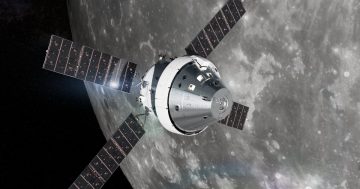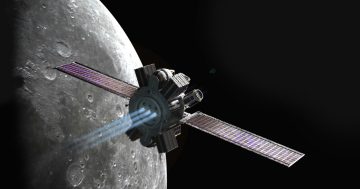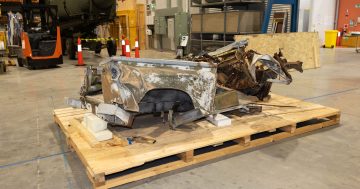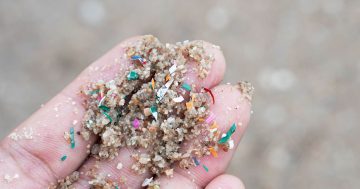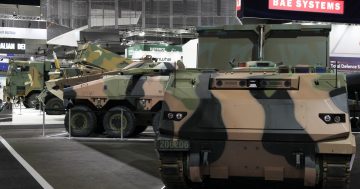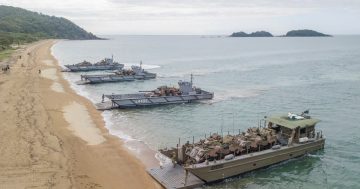James Devitt* says the Moon landing was a defining moment in human history and its technological achievements continue to affect us today.
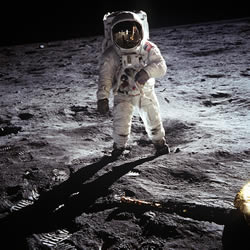
Photo: WikiImages
It’s hard to overstate the significance of the Apollo 11 Moon landing on 20 July 1969.
Whether you view it as an unlikely feat of engineering, a definitive surge ahead in the Cold War, or even just really, really good live TV, Neil Armstrong’s “giant leap for mankind” emerges as one of the defining moments of human history.
To celebrate the fiftieth anniversary of this unprecedented technological and cultural milestone, experts in various disciplines have weighed in on how the space program continues to shape their fields today.
Advances in aerospace engineering
“Aerospace engineering, like all engineering disciplines, has changed dramatically in the 50 years since the Moon landing,” says Richard Thorsen, Chair in the Mechanical and Aerospace Engineering Department at the Tandon School of Engineering at New York University.
“Some drivers of that change have been the rapid advance of supercomputing — both in terms of speed and capacity — and the miniaturisation of devices, which is very important in modern aerospace engineering, where weight is so important.”
“The evolution of materials, too, during the past 50 years has changed aircraft and spacecraft design,” Thorsen says.
“The options are so much greater today than they were in the Apollo era.”
“These new tools permeate all of the aerospace industry, not just space exploration.”
Journalism and ‘the infinite voyage’
“The first three Earthlings to reach the Moon profoundly influenced journalism by turning many of the reporters and editors who covered the epic feat of a lifetime — and who, by tradition, were supposed to ‘stay out of the story’ — into unabashed, blatant, cheerleaders and aspiring space travellers themselves,” says William E. Burrows, a Professor Emeritus of Journalism.
“Reporters and other correspondents who ordinarily produced stories that described the human race’s sordid side, including wars, purges, and other atrocities — and even those who covered the exploits of brave adventurers who climbed Everest, flew over the Poles, and crossed oceans in frail craft — were so awed by the Apollo 11 astronauts being the first to reach another world and actually land on it that they became virtual celebrants themselves,” Burrows says.
“The Moon landings changed journalism by literally raising the sights — the aspirations — of those who covered it.”
“Many who covered Apollo 11 and the flights that followed it became addicted to the infinite voyage and wanted to share that ultimate adventure.”
Astronaut food
“The postwar mid-twentieth century United States is often called the ‘golden age’ of food processing,” says Amy Bentley, Professor of Nutrition and Food Studies at the Steinhardt School of Culture, Education, and Human Development.
“While the mass production and processing of food began earlier, it was World War II that spurred technology, innovation, and product development.”
“Military researchers, in alliance with food manufacturers, freeze-dried, pounded, packaged, dehydrated, and preserved food in order to feed the US military, as well as allies and newly independent former Axis nations.”
“After the war, food manufacturers turned their attention to American consumers eager to spend their dollars.”
“In this era television came of age and advertised the food products, which were readily stocked in grocery stores.”
“The 1960s and 1970s were the heyday of the Apollo space program.”
“The Cold War space race was in full swing, and JFK and Presidents afterward felt the need to compete with the USSR on land and in space.”
“As with WWII, the space program spurred on technologies focused on food preservation and product development to ensure that the men sent into space would be adequately nourished, both physically and psychologically,” she says.
“Astronauts were genuine heroes, and fashions, furniture, and home décor — even popular culture [think of The Jetsons!] — reflected the public’s fascination with space.”
“I would say the legacy of space-inspired food products is significant,” Bentley says.
“While space food has come a long way, our food supply is still dependent on technologies developed and perfected in the mid to late twentieth century.”
“Breakfast bars, energy ‘goo’ packets, and freeze-dried camping food are remnants.”
“And instant coffee is still popular, too,” she says.
Beyond the limits of early software engineering
“The software used on the lunar lander is seen as a tour de force that would be almost inconceivable today,” says Ed Schonberg, Professor Emeritus of Computer Science at the Courant Institute of Mathematical Sciences.
“It had minuscule memory and incredibly slow hardware, from today’s point of view, and yet it supported concurrent processes with different priorities.”
“Since then, the methodology for the construction of reliable software systems has become much more rigorous, and makes use of formal verification tools, formal testing procedures, and high-level programming languages.”
“The FAA [Federal Aviation Administration] requires such procedures to be used when constructing software systems for aerospace, and similar requirements apply to transportation systems and medical devices,” he says.
Space travel and medicine
“Technologies developed for space travel have benefited health and medicine in various capacities,” says Maya N. Clark-Cutaia, Assistant Professor at the Meyers College of Nursing.
“One lesser-known innovation is a chemical process developed under a NASA contract that removes toxic waste from used dialysis fluid, or dialysate.”
“Essentially, under this ‘sorbent’ system, a much smaller volume of dialysate is cleaned and replenished for use rather than being drained and requiring additional fluid from a continuous water source to maintain additional dialysis sessions,” she says.
“Additionally, cost reduction has made them particularly attractive for home maintenance hemodialysis.”
“Sorbent technology is now being incorporated into both home and dialysis centres by one major for-profit company and for use with the first wearable kidney.”
“I expect that this trend will only gain momentum.”
* James Devitt is Managing Director of Public Affairs at New York University. He tweets at @JamesDevittNYU.
This article first appeared at www.futurity.org.


